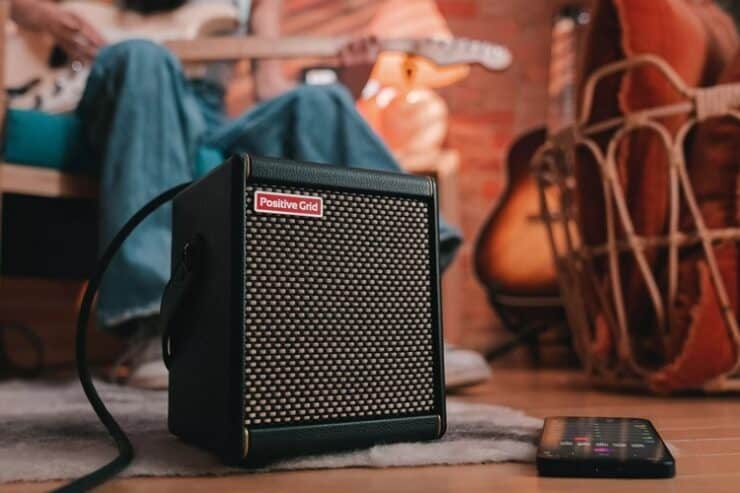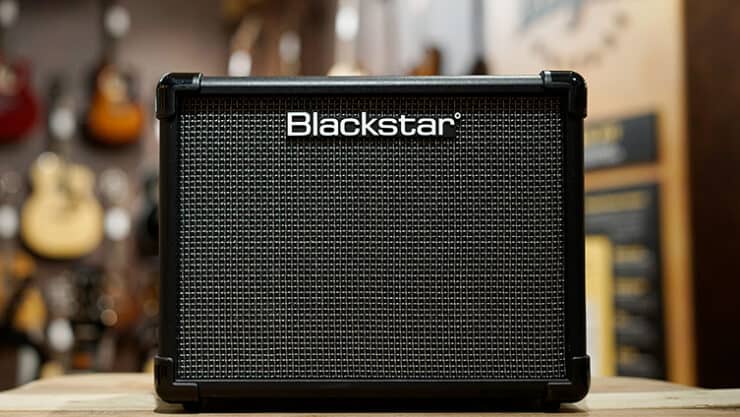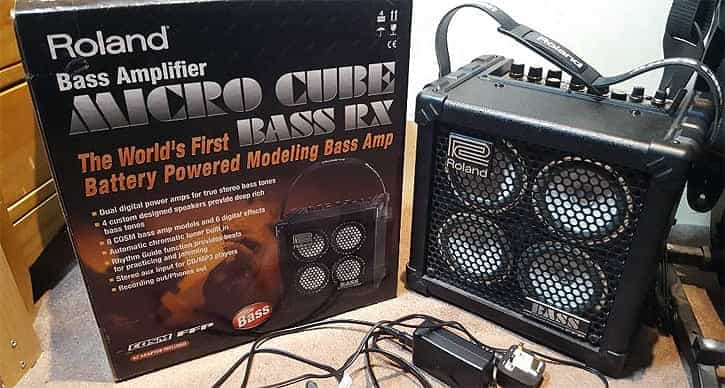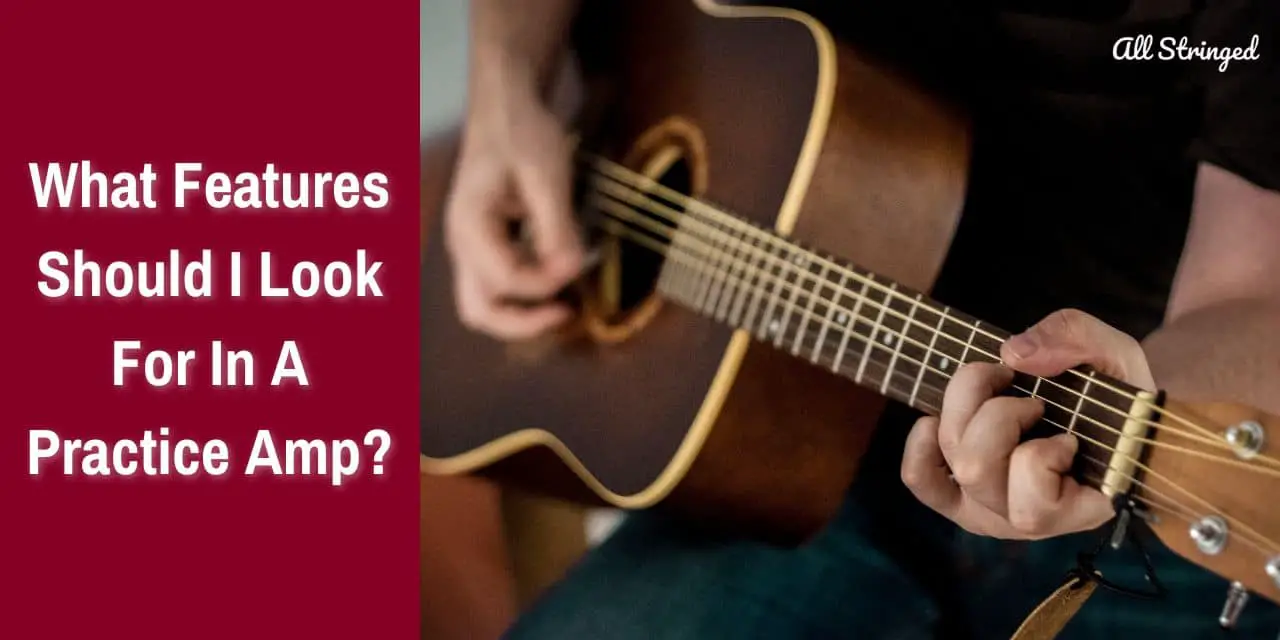If you’re a guitar player looking for the perfect practice amp for your home, look no further! This article will guide you through all the features you should consider before you make your purchase. From wattage, to portability and sound shaping, we’ll make sure that you know exactly what you should be looking for in a practice amp. So, keep reading on to find out what you need to know before you hit the shops!
Overview of practice amps
A practice amp is a type of guitar amp that is designed for use by musicians who are practicing their instruments. These amps are typically smaller and less powerful compared to performance amps, but they’re designed to offer a high-quality sound that allows musicians to hear their playing clearly.
There are various benefits of using a practice amp. For one, there are typically more affordable than performance amps, making them easily accessible to musicians who might not have the budget for a high-end amp. Additionally, practice amps are more portable than performance amps, which makes them ideal for musicians who have to travel with their instruments.
Another major benefit of using a practice amp is that they are quieter than performance amps. This means that musicians can easily practice their instruments without disturbing others in their household or in the neighborhood. This is especially important for musicians and guitarists who live in apartments or shared living spaces, where noise levels can be a significant issue.
Another benefit of using a practice amp is that they often come with built-in effects and features that allow musicians to experiment with different sounds and tones. These features can include reverb, chorus, distortion, and more. By experimenting with different effects, musicians can develop their unique style and sound. This can be highly beneficial when playing with a band or recording music.
ALSO READ: Best Practice Amp: Top 7 Picks to Play Anywhere!
Practice amps can also be used for recording music. Many practice amps come with a line-out feature, which allows musicians to connect their amp to a recording device. This is a great feature for musicians who are just starting out and want to record their music without investing in expensive recording equipment.

What features should I look for in a practice amp?
For musicians or guitarists who are looking to practice and improve their playing or develop their unique sound, a practice amp will be an important tool. However, with so many options available on the market, it can be quite tricky to know what to look for. Here are some of the key features you must keep in mind when you’re choosing a practice amp –
#1. Power rating and volume
The power rating of a practice amp will determine its power output and volume. The volume of a practice amp depends on the wattage of the amp. It is essential to choose an amp with a power rating suitable for your practice needs. A high-wattage amp may be necessary for live performances, but a lower wattage is generally sufficient for practicing at home. Look for an amp that has enough power to provide good tone and volume, but not so much that it is overpowering.
You could go for something that is quiet and affordable, like a Vox Amplug. It is a simple, sub-1W unit that can be plugged into headphones. For personal bedroom practices and small jam sessions with bandmates, amps between 15W and 40W will offer more than enough power. Meanwhile, for larger shows and noisy rock rehearsals, 50W to 100W will be loud enough to cut through other guitars, drums, and bass.
#2. Speaker size
The size of the speaker will determine the quality and clarity of the sound produced by the amp. A larger speaker generally produces better low-frequency response and overall sound quality. However, a smaller speaker can be more portable and easier to transport. Consider your practice needs when choosing the speaker size.
Speakers are typically measured in inches by diameter, with the common sizes being 8, 10, and 12 inches. The rule of thumb will be that bigger speakers result in stronger bass notes, whereas smaller ones will be better at handling high frequencies. When you come across terms like “4 x 12”, it’ll simply refer to the number and size of speakers in a cabinet. In this case, it will be four 12-inch speakers.
Meanwhile, half-stacks and full-stacks are used for referring to the number of cabinets. The former has one, while the latter has two or more. These are monstrous, heavy beasts that are suited best for gigging or rehearsing with a band.
#3. Tone controls
Tone controls will allow you to shape the sound and adjust the bass, treble, and midrange frequencies to get the desired tone. You should look for an amp that has user-friendly EQ controls that are easy to understand and adjust.
Most amps come with at least two channels – a clean mode and an overdriven mode, with many bigger amps upping the ante with many more. Some of them also allow you to tweak the voicing of individual channels. However, if you are simply looking for sparkling cleans and saturated distortion, two channels are all that you’ll need. If each channel comes with a dedicated equalizer, bass, mid, and treble controls, then it’ll be even better.
#4. Effects
Built-in effects can easily enhance your sound and inspire creativity. Look out for an amp that offers a wide range of effects such as delay, reverb, and distortion, as well as the ability to tweak these effects. The ability to save and recall custom effects settings can also be useful for consistent practice sessions.
Chorus and reverb are common built-in effects on analog practice amps, whereas hybrid and digital modeling practice amps come equipped with dozens of amazing effects. They are quite fun to play around with while also being useful introductions to the wild world of pedals.
#5. Connectivity
Connectivity options are important for practice amps. They allow you to connect your practice amp to other devices. Look out for an amp that has a headphone jack for practicing without disturbing others, as well as an auxiliary input for playing along with backing tracks or music. USB connectivity can also be useful for recording your playing.
If you look at the back of the practice amp, you should find input and output jacks of all sizes. This is where you’ll be hooking up other devices, such as external speakers for more might, a footswitch for controlling onboard effects, and pedals for daisy-chaining into an effects loop. Some models also have outputs for recording or to plug into a mixer.
Remember to ensure the practice amp has enough input jacks for all the musician’s instruments, including guitars, basses, keyboards, and microphones.
Moreover, there should also be a headphone jack, as it is essential for practicing alone. It’ll allow musicians and guitarists to practice without disturbing others. You should ensure that the headphone jack has great sound quality and that it is compatible with your headphones.
#6. Vintage or modern sound
Guitar amps that defined the classic rock sounds of the 60s used vacuum tubes, which produce a warm, vintage-style tone. Vulnerable brands from that era like Fender, Vox, and Marshall still manufacture and sell tube amps with specific sounds. Fender tube amps are known best for their clean surf and country tones, whereas guitarists prefer Vox for the jangly, mid-heavy sounds that the Beatles were known for. As for Marshall amps, these amps offered the massive crunch for the 70s supergroups like Led Zeppelin.
The drawbacks of these amps happen to be their price and lack of versatility. Amps that use solid-state transistors are the more approachable alternative to tube units. This requires less maintenance and happens to be lighter and more affordable. Smaller solid-state amps by Blackstar and Fender are wonderful for home practice, and they can easily adapt to effect pedals much better than some tube amps.
The most versatile options happen to be digital amps like the Fender Mustang GT. This amp has preset sounds that emulate specific vintage tube amps and multiple effects. However, many purists feel that digital modeling amps don’t have the warm authenticity of analog effect pedals or tubes.
#7. Configuration
There are two configurations in practice amps – combos and separates. The former comes with the “head”, which is the preamp and power amp as well as a speaker cabinet in a single box. Meanwhile, the latter comes as separate parts. It’ll be a trade-off between flexibility and portability.
There are rackmount preamps and power amps, which offer even more freedom to combine discrete components. However, doing this can be quite daunting, and it isn’t recommended that newbies should go down this path.
Even though technically not a part of the amp, speakers play a major role in the configuration and sound that is produced. Most amps are combos, which house one or two speakers between 6 and 12 inches in diameter in the same enclosure as the amp. Combo amps can either be small, at-home practice amps or even large suitcase-sized 100W models.
Some musicians and guitarists prefer the versatility of separate amp heads such as the Fender Bassman and EVH 5150 designed by Eddie Van Halen. Although heads don’t contain speakers, they connect to external speaker cabinets capable of housing four to eight separate speakers, generally between 10 and 15 inches in diameter.

Different types of practice amps
For musicians and guitarists, practice amps are an essential tool to help them develop their playing skills and perfect their sound. When choosing a practice amp, it is essential to consider the different types available to ensure you select the best one for your playing style and practice needs. Here are some of the different types of practice amps available –
#1. Tube amps
Many musicians and guitarists consider tube amps to be the holy grail of guitar amps. In the right hands, they might very well be. Tube amps come with vacuum tubes in both the preamp and power amp stages, and it is responsible for boosting signals.
The consensus about tube amps is that they’re much more responsive. Playing with a heavy or light touch will result in different tones and offer smoother and fatter sounds that give heft to your playing. However, the biggest reason guitarists prefer tube amps is the natural distortion on offer. If you crank up the gain but keep the volume low, you are forcing the tubes to work harder than what these amps were designed to do. This results in a gritty, saturated overdrive that because of the unpredictability, has been cherished for decades.
With that said, there are almost as many snags with tube amps. They are heavy, notoriously expensive, and need regular maintenance. If you are new to the instrument, you probably will not be able to exploit a tube amp’s quirks. It may even sound like an ordinary solid-state amp.
#2. Solid-state amps
Instead of tubes, these amps typically rely on transistors for amplifying signals. Many people believe that transistors do not offer the responsiveness and subtlety of tubes. This takes them to the breaking point, which can result in a thinner or harsher distortion. But the difference is rather negligible for beginners and untrained ears. Many genres such as metal will benefit from the consistent sound that a solid-state amp can produce.
Solid-state amps are typically lighter and cheaper than tube amps and need little to no maintenance. It should come as no surprise that most beginners prefer starting with one of these.
#3. Digital modeling amps
There are musicians and guitarists who don’t have any qualms over shelling out thousands of dollars for an authentic mid-century Fender amp because no other amps sound remotely close. This might have had some issues a few decades back, but the digital modeling amps today can easily replicate the tones of the years gone by.
Instead of transistors or tubes, these practice amps make use of digital tech in the preamp stage for simulating the legendary amps of yore. Depending on the amp model you are looking for, digital modeling amps can mimic speakers, giving a plethora of mix-and-match combinations that you can choose from.
The downside of digital modeling amps is the steep learning curve. It can take hours of constant fiddling with buttons to dial in a tone that pleases your ears. You could have used these hours on your instrument instead.
#4. Hybrid amps
A hybrid practice amp can mean one of two things – either the amp’s half tube and half solid-state, or it comes with a digital modeling preamp and a tube power amp. Most of the former only use tubes in the preamp stages, which means you can force them to “break up” life you typically would an all-tube amp.
Being the jack of all trades, these amps manage to combine the benefits of both solid-state and tube amps. They make use of solid-state circuitry for the preamp section and a vacuum tube for the power amp section, which provides the warm, natural tone of a tube amp with the affordability and reliability of a solid-state amp.
#5. Mini Amps
Mini amps are the smallest type of practice amp available. They are portable, affordable, and designed for musicians who need to practice quietly or on the go. They typically have a lower wattage and smaller speakers, making them suitable for practice sessions in smaller rooms.
#6. Acoustic practice amps
Acoustic practice amps are designed specifically for acoustic guitar players. They are designed to reproduce the natural tone of an acoustic guitar and are equipped with features such as built-in reverb, chorus, and delay effects.

Budget considerations for practice amps
When it comes to purchasing a practice amp, there are generally two main options – whether to buy a new amp or a used amp. Both of them have their own advantages or disadvantages, but there are also some other considerations to remember when shopping for a practice amp, like the cost of accessories.
New vs. used amps
One of the major advantages of purchasing a new amp is that it’ll come with a warranty, which means that if something goes wrong, you can just have it repaired or replaced at no extra cost. You can even have the peace of mind of knowing that the amp has not been used previously. Therefore, it needs to be in excellent condition. New amps generally come with the latest features and the latest technology that you might not come across on older models.
Meanwhile, purchasing a used amp might end be a more affordable option for some situations. You can easily find used practice amps discounted the cost of a new amp. If you do your research, you could find some great deals. Moreover, some used amps might already have been broken in and come with a unique sound that you may prefer. However, it is important that you should be cautious when purchasing a used amp as it might have hidden problems that aren’t immediately apparent, and it might not come with a warranty.
Cost of accessories
Another budget consideration to consider when purchasing a practice amp will be the cost of accessories. Accessories like stands, cables, and effects pedals can quickly add up and significantly increase the overall cost of your purchase. However, it’s important to note that these accessories can enhance your playing experience and help you achieve the sound you’re looking for.
When it comes to cables, it’s essential to invest in high-quality cables to ensure that you get the best sound possible. Cheaper cables can often produce unwanted noise and distortion, which can affect your playing experience negatively. Stands can also be useful to position your amp at the perfect angle for your playing. Effects pedals can also enhance your sound by adding various effects such as reverb, delay, and distortion.
Which practice amp is right for you?
The ideal practice amp for you will depend on where you’re going to play. Novices and beginners, especially younger guitarists with noise-sensitive parents, can begin with an affordable option. Small digital modeling combo amps are an ideal “variety pack” of tones and effects for players who are still looking for their personal sound. Established performers would already know what their detailed amp preferences happen to be. If you have already decided that there is no substitute for loud, classic goodness, then there is no replacement for spending large sums on a premium tube combo or head.
FAQs
What features should I look for when buying a practice amp?
When looking for a practice amp, some important features to consider include wattage, speaker size, tone and volume control, portability, and headphone jack. The wattage of the amp will determine how loud it can get, so it’s important to consider the size of the space you plan to use it in. The size of the speaker will affect the sound quality, so it’s important to consider the type of sound you are hoping to achieve. Tone and volume control give you the ability to adjust the sound to your preference, and portability is important if you plan to use the amp on the go. Finally, a headphone jack is a great feature for silent practice.
What kind of wattage should I look for in a practice amp?
The wattage of a practice amp will determine how loud it can get, so it’s important to consider the size of the space you plan to use it in. Generally, amps with lower wattage (2-10 watts) are ideal for practicing at home or in small to medium size spaces. For larger spaces or for playing with a band, you may want to consider an amp with higher wattage (10-30 watts).



